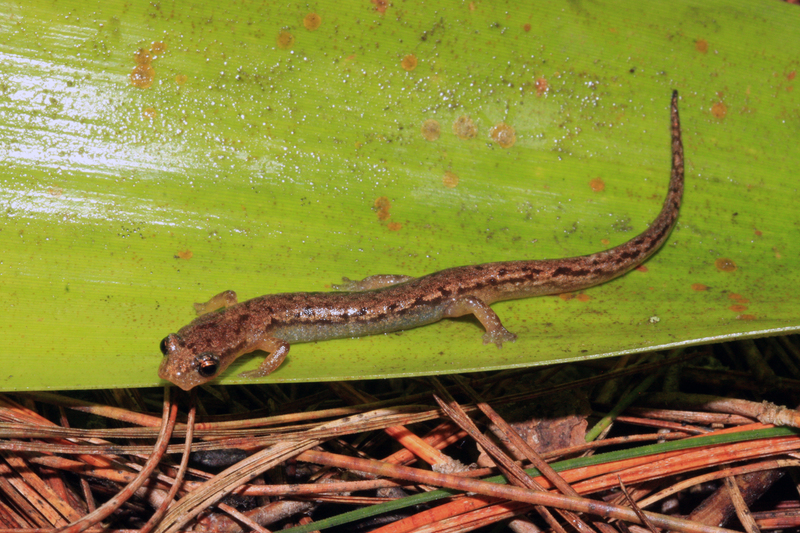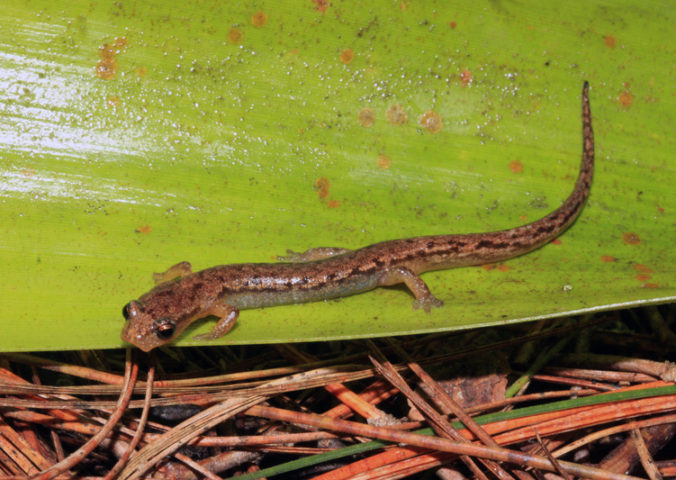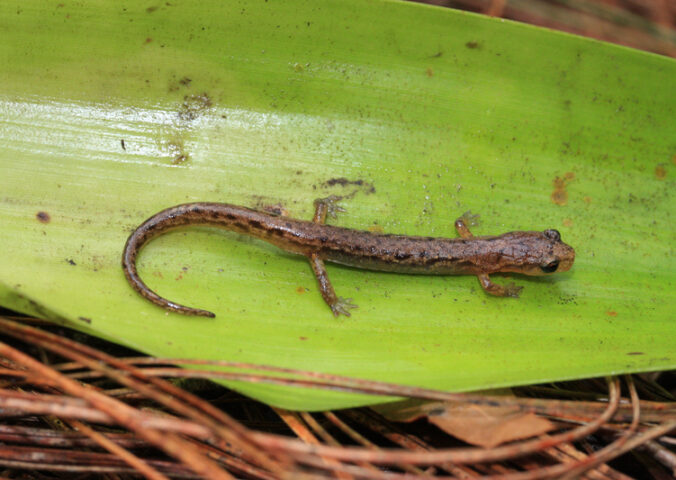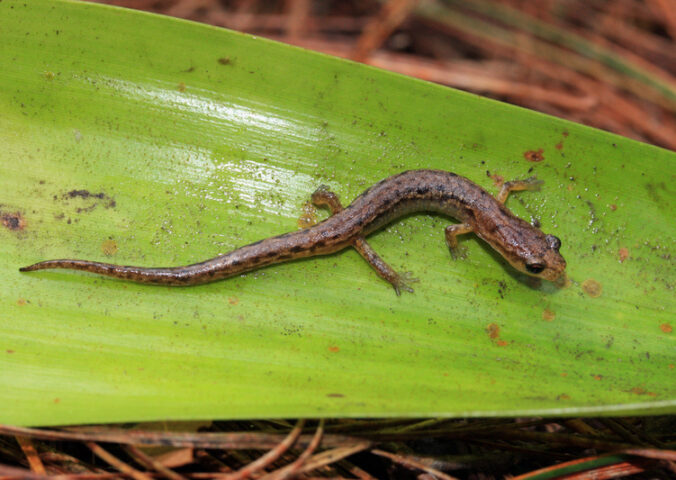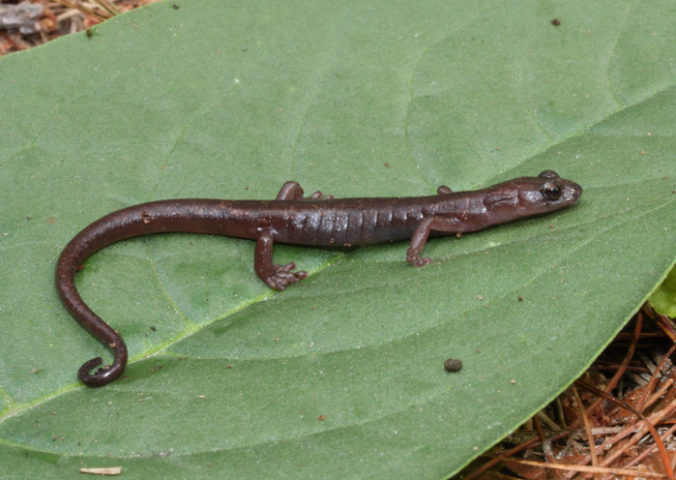About
Before it was recorded again in 2010, only one individual of the Critically Endangered arboreal splayfoot salamander had been found since the 1980s.
This species is part of the Plethodontidae, the largest salamander family, comprising almost two thirds of all known species. They are thought to have diverged from all other amphibian species over 100 million years ago, in the Early Cretaceous. They are as distantly related to all other amphibian lineages as humans are to elephants, and emerged when dinosaurs still roamed the Earth!
Due to ongoing declines in its habitat quality and extent, the population is thought to be decreasing. The total area in which the species occur is now only 14 km². A major threat to this species is deforestation and fragmentation, as the species is highly dependent upon bromeliads in trees. These threats are driven by agricultural expansion and the extraction of wood. Fire is also a threat, as most agricultural practices in the region use slash and burn methods.
The arboreal splayfoot salamander is protected by Mexican law, in a “Special Protection” category, however, the species is not found in any protected areas.
- Order: Caudata
- Family: Plethodontidae
- Population: Very rare
- Trend: decreasing
EDGE Score
Distribution
This species is only known from a forest around Tianguistengo in north eastern Hidalgo, Mexico, between 1,900-2,100 metres above sea level.
Habitat and Ecology
This species lives terrestrially, and its habitat is humid pine-oak and cloud forests. They breed by direct development; whereby the offspring bypass a larval stage and emerge from the egg as a miniature adult.
